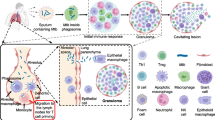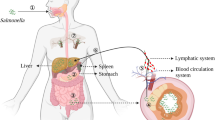Abstract
Mycobacterium tuberculosis, the causative agent of tuberculosis (TB), is an extraordinarily successful pathogen of humankind. It has been estimated that up to one-third of the world’s population is infected with M. tuberculosis, and this population is an important reservoir for disease reactivation. Resuscitation promoting factor (Rpf) is a secretory protein, which was first reported in Micrococcus luteus. There are five functionally redundant Rpf-like proteins found in M. tuberculosis. Rpf promotes the resuscitation of dormant bacilli to yield normal, viable colony forming bacteria. All Rpfs share a conserved domain of about 70 amino acids and possess a lysozyme-like activity. The structural studies of the conserved domain suggest that Rpfs could be considered as a c-type lysozyme and lytic transglycosylases. Recently a novel class of nitrophenylthiocyanates (NPT) inhibitors of the muralytic activity of Rpf were reported which opens a new approach in the study of cell-wall hydrolyzing enzymes. This review describes molecular and structural studies conducted on Rpf proteins, their role in the resuscitation of dormant bacteria, in the reactivation of latent infection and identification of low molecular weight inhibitors of resuscitation promoting factors.

Similar content being viewed by others
References
WHO (2006) Global tuberculosis control: surveillance, planning, financing. WHO report 2006, Geneva, World Health Organization (WHO/HTM/TB/2006.362)
WHO (2009) Global tuberculosis control: epidemiology, strategy, financing. WHO report 2009 (WHO/HTM/TB/2009.411)
Selwyn PA, Hartel D, Lewis VA, Schoenbaum EE, Vermund SH, Klein RS et al (1989) A prospective study of the risk of tuberculosis among intravenous drug users with human immunodeficiency virus infection. N Engl J Med 320:545–550
Parrish NM, Dick JD, Bishai WR (1998) Mechanisms of latency in Mycobacterium tuberculosis. Trends Microbiol 6:107–112
Wayne LG, Sohaskey CD (2001) Nonreplicating persistence of Mycobacterium tuberculosis. Annu Rev Microbiol 55:139–163
Flynn JL, Chan J (2001) Tuberculosis: latency and reactivation. Infect Immun 69:4195–4201
Mukamolova GV, Kaprelyants AS, Young DI, Young M, Kell DB (1998) A bacterial cytokine. Proc Natl Acad Sci USA 95:8916–8921
Mukamolova GV, Turapov OA, Kazaryan K, Telkov M, Kaprelyants AS, Kell DB, Young M (2002) The rpf gene of Micrococcus luteus encodes an essential secreted growth factor. Mol Microbiol 46:611–621
Mukamolova GV, Turapov OA, Young DI, Kaprelyants AS, Kell DB, Young M (2002) A family of autocrine growth factors in Mycobacterium tuberculosis. Mol Microbiol 46:623–635
Cohen-Gonsaud M, Keep NH, Davies AP, Ward J, Henderson B, Labesse G (2004) Resuscitation-promoting factors possess a lysozyme-like domain. Trends Biochem Sci 29:7–10
Kaprelyants AS, Mukamolova GV, Kormer SS, Weichart DH, Young M, Kell DB (1999) Intercellular signaling and the multiplication of prokaryotes:bacterial cytokines. Symp Soc Gen Microbiol 57:33–69
Kell DB, Kaprelyants AS, Weichart DH, Harwood CL, Barer MR (1998) Viability and activity in readily culturable bacteria: a review and discussion of the practical issues. Antonie Van Leeuwenhoek 73:169–187
Shleeva MO, Bagramyan K, Telkov MV, Mukamolova GV, Young M, Kell DB, Kaprelyants AS (2002) Formation and resuscitation of “non-culturable” cells of Rhodococcus rhodochrous and Mycobacterium tuberculosis in prolonged stationary phase. Microbiology 148:1581–1591
Biketov S, Potapov V, Ganina E et al (2007) The role of resuscitation promoting factors in pathogenesis and reactivation of Mycobacterium tuberculosis during intra-peritoneal infection in mice. BMC Infect Dis 7:146
Nielsen H, Engelbrecht J, Brunak S, Von HG (1997) Identification of prokaryotic and eukaryotic signal peptides and prediction of their cleavage sites. Protein Eng 10:1–6
Krogh A, Larsson B, von HG, Sonnhammer EL (2001) Predicting transmembrane protein topology with a hidden Markov model: application to complete genomes. J Mol Biol 305:567–580
Pedulla ML, Ford ME, Houtz JM, Karthikeyan T, Wadsworth C, Lewis JA, Falbo J, Jacobs SD, Gross J, Pannunzio NR, Brucker W, Kumar V, Kandasamy J, Keenan L, Bardarov S, Kriakov J, Lawrence JG, Jacobs WR, Hendrix RW, Hatfull GF (2003) Origins of highly mosaic mycobacteriophage genomes. Cell 113:171–182
Gomez M, Johnson S, Gennaro ML (2000) Identification of secreted proteins of Mycobacterium tuberculosis by a bioinformatic approach. Infect Immun 68:2323–2327
Arruda S, Bomfim G, Knights R, Huima-Byron T, Riley LW (1993) Cloning of an Mycobacterium tuberculosis DNA fragment associated with entry and survival inside cells. Science 261:1454–1457
Cole ST, Brosch R, Parkhill J, Garnier T, Churcher C, Harris D et al (1998) Deciphering the biology of Mycobacterium tuberculosis from the complete genome sequence. Nature 393:537–544
Tufariello JM, KMiJ Xu, Manabe YC, Kesavan AK, Drumm J, Tanaka K, Jacobs WR, Chan J (2006) Deletion of the Mycobacterium tuberculosis resuscitation-promoting factor Rv1009 gene results in delayed reactivation from chronic tuberculosis. Infect Immun 74:2985–2995
Tufariello JM, Jacobs WR, Chan J Jr (2004) Individual Mycobacterium tuberculosis resuscitation-promoting factor homologues are dispensable for growth in vitro and in vivo. Infect Immun 72:515–526
Fenhalls GL, Stevens LM, Bezuidenhout J, Betts JC, Pvan Helden, Duncan LK (2002) In situ detection of Mycobacterium tuberculosis transcripts in human lung granulomas reveals differential gene expression in necrotic lesions. Infect Immun 70:6330–6338
Rachman H, Strong M, Ulrichs T, Grode L, Schuchhardt J, Mollenkopf H, Kosmiadi GA, Eisenberg D, Kaufmann SHE (2006) Unique transcriptome signature of Mycobacterium tuberculosis in pulmonary tuberculosis. Infect Immun 74:1233–1242
Gupta RK, Srivastava BS, Srivastava RS (2010) Comparative expression analysis of rpf-Like genes of Mycobacterium tuberculosis H37Rv under different physiological stress and growth conditions. Microbiology 156:2714–2722
Downing KJ, Betts JC, Young DI, McAdam RA, Kelly F, Young M, Mizrahi V (2004) Global expression profiling of strains harbouring null mutations reveals that the five rpf-like genes of Mycobacterium tuberculosis show functional redundancy. Tuberculosis 84:167–179
Downing KJ, Mischenko VV, Shleeva MO et al (2005) Mutants of Mycobacterium tuberculosis lacking three of five rpf-like genes are defective for growth in vivo and for resuscitation in vitro. Infect Immun 73:3038–3043
Hett EC, Chao MC, Styen AJ, Fortune SM, Deng LL, Rubin EJ (2007) A partner for the resuscitation-promoting factors of M. tuberculosis. Mol Microbiol 66:658–668
Hett EC, Chao MC, Deng LL, Rubin EJ (2008) A mycobacterial enzyme essential for cell division synergizes with resuscitation-promoting factor. PLoS Pathog 4(2):e1000001
Kana BD, Gordhan BG, Downing KJ, Sung N, Vostoroktunova G, Machowski EE, Tsenova L, Young M, Kaprelyants AS, Kaplan G, Mizrahi V (2008) The resuscitation promoting factors of Mycobacterium tuberculosis are required for virulence and resuscitation from dormancy but are collectively dispensable for growth in vitro. Mol Microbiol 67:672–684
Rickman L, Scott C, Hunt DM, Hutchinson T, Menendez MC, Whalan R et al (2005) A member of the cAMP receptor protein family of transcription regulators in Mycobacterium tuberculosis is required for virulence in mice and controls transcription of the rpfA gene coding for a resuscitation promoting factor. Mol Microbiol 56:1274–1286
Raman S, Hazra R, Dascher CC, Husson RN (2004) Transcription regulation by the Mycobacterium tuberculosis alternative sigma factor SigD and its role in virulence. J Bacteriol 186:6605–6616
Makinoshima H, Glickman MS (2005) Regulation of Mycobacterium tuberculosis cell envelope composition and virulence by intramembrane proteolysis. Nature 436:406–409
Mukamolova GV, Kaprelyants AS, Kell DB, Young M (2003) Adoption of the transiently non-culturable state—a bacterial survival strategy? Adv Microb Physiol 47:65–129
Russel-Goldman E, Xu J, Wang X (2008) A Mycobacterium tuberculosis Rpf double-knockout strain exhibits profound defects in reactivation from chronic tuberculosis and innate immunity phenotypes. Infect Immun 76:4269–4281
Mohan VP, Scanga CA, Yu K et al (2001) Effects of tumor necrosis factor alpha on host immune response in chronic persistent tuberculosis: possible role for limiting pathology. Infect Immun 69:1847–1855
Ravagnani A, Finan CL, Young M (2005) A novel firmicture protein family related to the actinobacterial resuscitation-promoting factors by non-orthologous domain displacement. BMC Genomics 6:39
Cohen–Gonsaud M, Barthe P, Bagneris C et al (2005) The structure of a resuscitation-promoting factor domain from Mycobacterium tuberculosis shows homology to lysozyme. Nature 12:270–273
Ruggiero A, Tizzano B, Pedone E et al (2009) Crystal structure of the resuscitation promoting factor (DeltaDUF) RpfB from M. tuberculosis. J Mol Biol 385:153–162
Mukamolova GV, Murzin AG, Salina EG et al (2006) Muralytic activity of Micrococcus luteus Rpf and its relationship to physiological activity in promoting bacterial growth and resuscitation. Mol Microbiol 59:84–98
Demina GR, Makarov VA, Nikitushkin VD, Ryabova OB, Vostroknutova GN, Salina EG, Shleeva MO, Goncharenko AV, Kaprelyants AS (2009) Finding of the low molecular weight inhibitors of resuscitation promoting factor enzymatic and resuscitation activity. PLoS ONE 4:e8174
Acknowledgments
Authors thank Director for support and Dr. Brahm S. Srivastava for critical reading of the manuscript. RKG is thankful to CSIR for senior research fellowship. CDRI communication number 77/2010/RS.
Author information
Authors and Affiliations
Corresponding author
Rights and permissions
About this article
Cite this article
Gupta, R.K., Srivastava, R. Resuscitation Promoting Factors: a Family of Microbial Proteins in Survival and Resuscitation of Dormant Mycobacteria. Indian J Microbiol 52, 114–121 (2012). https://doi.org/10.1007/s12088-011-0202-6
Received:
Accepted:
Published:
Issue Date:
DOI: https://doi.org/10.1007/s12088-011-0202-6




